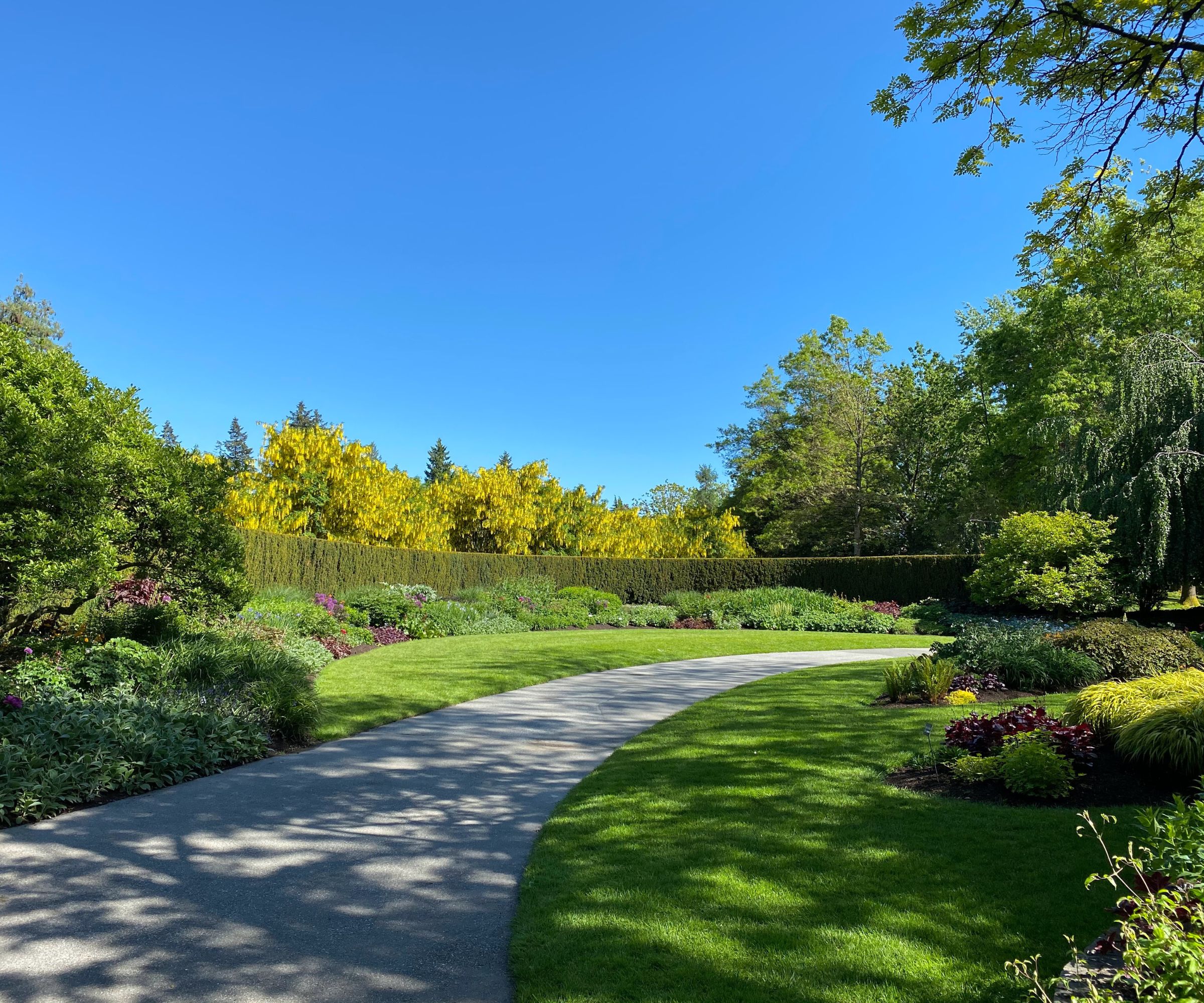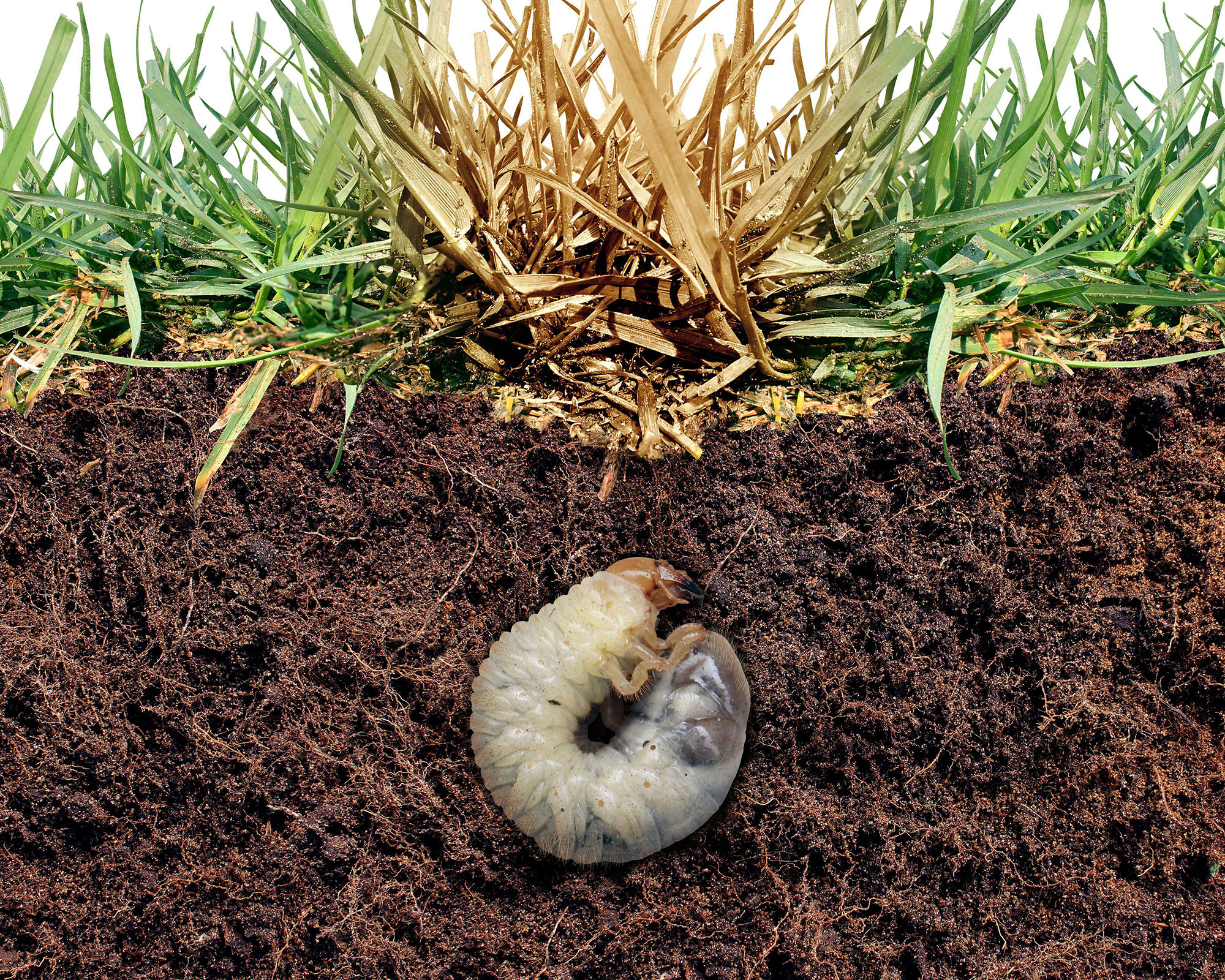How to get rid of lawn grubs – the best ways to remove these damaging pests
Lawn problems aren't just caused by the elements – pest larvae do serious damage too


Is your once pristine and healthy lawn now brown, patchy and unsightly? If so, the problem could be lawn grubs. Left untreated, a damaging lawn grub infestation can destroy your grass. Fortunately, there are methods to get rid of lawn grubs for good.
Growing plants has always been a balancing act between the gardener and the pest population. Some insects are welcome pollinators, while others like ladybirds are natural predators that help control damaging pests such as greenfly. Some, like aphids, are obvious, while others do their damage unseen until it’s too late, like lawn grubs.
Here we take a look at the best ways to rid your backyard landscaping of this destructive pest using simple but effective solutions to make your lawn green and thick again.
What are lawn grubs?
Chafer grubs and leatherjackets are both larval stages of insects and rely on eating plant roots for their development. Unfortunately for us, this includes our lawns. Vine weevil larvae are similar, but less fussy. They will munch their way through most young roots and the first you know about it is often when the plant collapses.
Grass pests, including chafer grubs and leatherjackets, have become a major problem, killing large areas of turf as they develop into adults. The problem gets worse when birds, badgers and foxes, which see the larvae as juicy morsels, rip up the lawn to get at their prey, causing damage.

How to get rid of lawn grubs
Grubs damage your lawn by feeding on the roots, and eventually turn into adult beetles that will feast on other vegetation in your yard. Many amateur gardeners treat their lawn with chemical grub control, however, there are numerous ways (natural and chemical) to rid your yard of this common and problematic pest once and for all.
1. Encourage natural predators
Unsurprisingly, lawn grubs have plenty of natural predators. However, wildlife like moles, skunks and raccoons will only further damage your yard, other won't.
Design expertise in your inbox – from inspiring decorating ideas and beautiful celebrity homes to practical gardening advice and shopping round-ups.
Encourage birds like blue jays, robins, magpies and chickadees, for example, who love feasting on grubs, and will cause none to very little damage to lawns. If you keep chickens, they will also happily eat grubs that thrive on the lawn.
Invest in the best plants for birds and learn how to make fat balls for birds to ensure that your yard is as attractive as possible for these natural pest controllers. There are some plants to attract birds of specific species, such as flowers that attract hummingbirds, while there are others that will attract many different varieties.
2. Limit moisture and irrigation
Lawn grubs need moisture to survive and thrive, so one easy way to limit the grub population is to limit the amount of water your lawn receives with an artificial drought.
if you have a grass lawn that can go dormant in the summer and recover once you start watering again, you could take this opportunity to kill lawn grubs while also conserving precious water resources.
However, this is not always possible, since grubs can be found in thriving vegetable gardens and flower beds where water is required on a regular basis.
3. Introduce beneficial nematodes
Biological control, in the form of nematodes, is one answer. These microscopic eelworms move around by swimming in soil moisture. They are host-specific, so will only go after the pest you wish them to control, and they are safe to use around children, pets and wildlife. Lawn grubs are unable to build up a resistance to the nematodes in the way they can to chemical-based controls.
Nematodes are available by mail order and arrive in small parcels. Ideally, they should be applied immediately, but many can be stored in a refrigerator at 37°F - 49°F for up to two weeks if it is not possible to apply them on arrival. Bear in mind that if the soil is dry their range of travel is limited, so it’s important to water the area before adding the control solution, and water again if there is no steady rain. Their other major requirement is soil temperature: if it gets too cold or too dry these creatures will die.
This is also a tried-and-tested way to kill Japanese beetles, too. The bacteria is harmless to humans and other organisms and cannot live freely in nature.
4. Dethatch and aerate your lawn
Learning when to dethatch a lawn and how to aerate a lawn will make it less attractive for grubs.
Aerating a lawn involves making small holes in the soil which let air, water and nutrients reach the roots. But why do you need to do it? Thatched and dense, compacted soil provides a shelter for grubs, so removing thatch and aerating the lawn will make it harder for these pests to thrive.
Additionally, these lawn care methods will make it easier for nematodes, and other natural solutions to penetrate the surface of the lawn.
5. Apply neem oil
If you prefer to use eco-friendly or organic gardening methods, you'll want to keep neem oil in your garden shed. Neem oil, derived from the Indian neem trees, has pesticidal and medicinal properties that have been known for centuries in India. It is antiviral, antibacterial, antiseptic and antifungal, too. It is also known to be an effective fly repellent, as well as lawn grubs. This natural pesticide deters grubs from laying eggs, feeding and maturing into adults, thus breaking the cycle and helping to control the grub population.
To make a homemade neem oil repellent, simply mix neem oil and water and spray on the grub-infested lawn using a sprayer. Apply generously over the affected areas and be sure to wear protective clothes to avoid staining.
To get the best out of your lawn once grubs have been removed, set it off with stylish lawn edging ideas and care for it with one of the best ride-on lawn mowers. If your grass starts to lose color, then find out when to add lime to lawns to get it back to a luscious, green state.

Jennifer is the Digital Editor at Homes & Gardens, bringing years of interiors experience across the US and UK. She has worked with leading publications, blending expertise in PR, marketing, social media, commercial strategy, and e-commerce. Jennifer has covered every corner of the home – curating projects from top interior designers, sourcing celebrity properties, reviewing appliances, and delivering timely news. Now, she channels her digital skills into shaping the world’s leading interiors website.